A Little Salty… Brackish Fish For The Home Aquarium
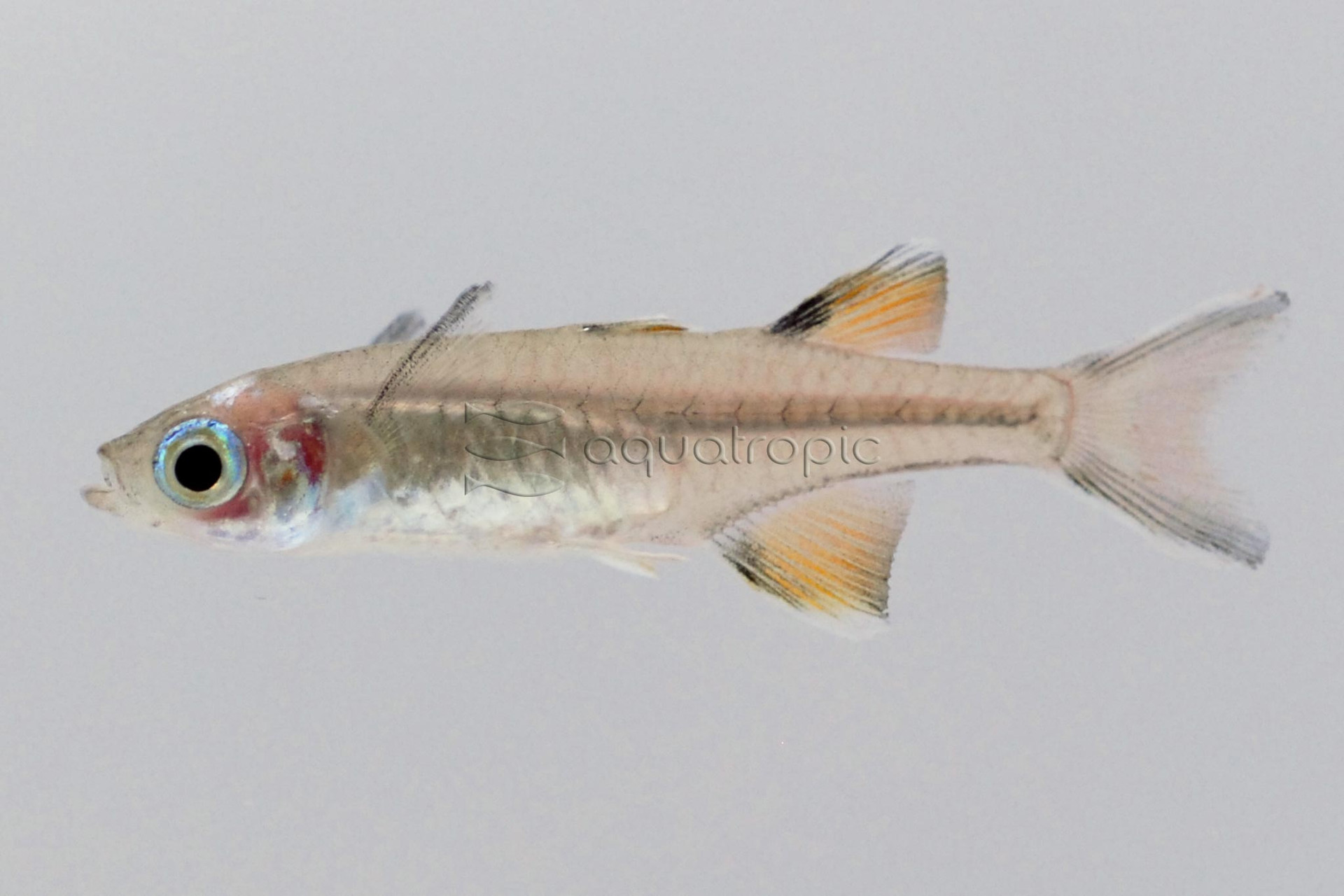
There are places on this great big planet of ours where the inevitable must take place… the rivers and streams of the continents must give way to the salted waters of the seven seas. Here, where pure freshwater meets ocean, aquatic worlds collide to create a unique piscine fauna adapted for the intense physiological changes this harsh environment necessitates. Take a fish from some acidic backwater swamp and drop it into saltwater, and it won’t be long before it is belly-up, but, for many brackish water animals, this is just par for the course, another day in the life.
Keeping brackish water fishes in an aquarium comes with some challenges and plenty of rewards for those brave enough to take the plunge. A surprising variety of commonly available fishes originate from these sorts of habitats, and even some species which normally reside in fully freshwater conditions can still do just fine in varying levels of salinity. Still, misinformation does exist, and mistakenly adding a stenohaline fish (i.e. one with a low salt tolerance) into water which it cannot adapt to will result in a sad outcome every time. So let’s do our homework and discover some of the best options out there…
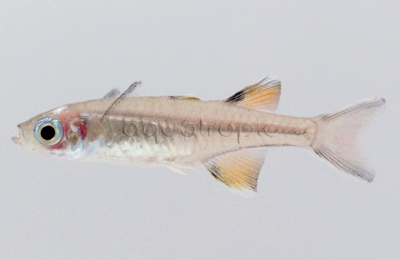
Pacific Blue-eye (Pseudomugil signifer)
The Blue-eyes are a small family of primarily freshwater fishes distributed across tropical portions of Australia and New Guinea. They are often confused with the melanotaeniid rainbowfishes, to which they are closely related, but they are perhaps most similar to a primarily marine group of fishes known as silversides. This hints at an ancient origin in saline habitats, and likely helps to explain why certain members of this group appear to still be quite highly adaptable to fully marine conditions. This is, however, not universally true. Many species are now specialized for a life in acidic freshwaters, while others, like Pseudomugil signifer, occur primarily in coastal habitats. This can encompass everything from low conductivity, low pH peat swamps to fully marine conditions, and, remarkably, it is not uncommon for this little fish to be exposed to both conditions in the course of a single day as rainstorms inundate their homes with massive amounts of freshwater, only to see the tides wash the salt back in. Similarly, in an aquarium environment, nearly any water conditions will prove suitable, making this fish one of the few which can truly thrive in both a soft planted aquarium or a coral reef.
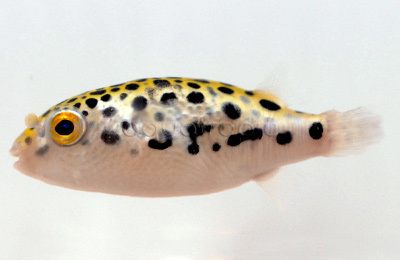
Green Spotted Pufferfish (Tetraodon nigroviridis)
Pufferfishes are another group whose greatest diversity lies in the ocean, but a surprising number of species have successfully invaded freshwaters across the planet, including the Amazon, across tropical portions of Africa, as well as India and Southeast Asia. Many of these are true freshwater denizens, which would never experience salinity in their day to day lives, but others are more coastal and, accordingly, show a vast salt tolerance. At the top of this list is the Green Spotted Pufferfish, native across a large swath of Asia, from India to the Philippines. Though often seen far upstream in pure freshwater, this colorful fish is just at home in the sea. For this reason, this species has been particularly well-studied by the scientific community, with many in-depths papers published on its physiological and metabolic adaptations. For instance, though it might not be recommended in an aquarium setting, you can successfully take a specimen from pure freshwater and transfer it immediately to pure saltwater without any real issue. Within 48 hours, the gill membranes will change to accommodate this fluctuation, allowing the pufferfish to exist in perpetuity at the higher salinity. The opposite holds true as well, allowing for an instant reversal into freshwater. It’s even possible to adapt specimens to hypersaline conditions far harsher than anything the species is likely to encounter in the wild. Many aquarists have taken advantage of this versatility to introduce the Green Spotted Pufferfish into marine aquariums, and the species can even be mixed alongside many corals, making this one of the most unique and appropriate members of its family for smaller tanks.
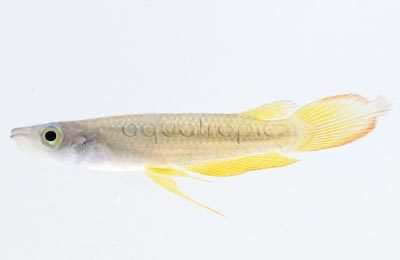
Golden Wonder Killifish (Aplocheilus lineatus)
Killifish are a hugely diverse group that has long had a bit of a cult following among aquarists. Many are extraordinarily colorful, rivaling even the most vibrant of coral reef fishes, but their unique and often ephemeral life histories often preclude them from being widely bred commercially. But the Golden Wonder Killifish is one of the most notable exceptions, having been bred so abundantly that captive specimens bear little resemblance to their wild counterparts. The scientific name Aplocheilus lineatus alludes to the natural appearance,consisting of a series of short vertical lines along the posterior portions of the otherwise colorless fish. Contrast that to the commercial strains of this species, which is almost entirely a bright, cheery, sunny yellow (at least in the males). Females, on the other hand, are noticeably paler and have less-dramatic looking fins. This bulky killifish, which tops out at around four inches, naturally occurs across across portions of Southern India and throughout Sri Lanka, being found in a wide variety of low-lying swamps, rice paddies and, importantly, in brackish estuaries.
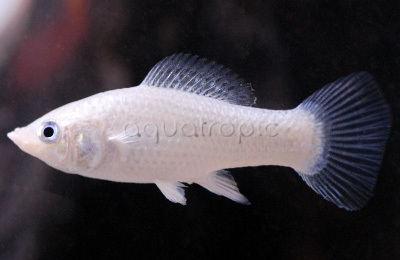
Sailfin Molly (Poecilia sphenops)
The dramatic dorsal fin of a male Sailfin Molly is hard to beat, making this one of the showiest options for the brackish water aquarium. Unbeknownst to many, this is one of the very few fishes native to North America which is regularly available, as you’ll find it occurring everywhere from the Carolinas, through the Gulf Coast and down into portions of Mexico. It’s preferred ecological niche is in coastal waterways, where the algae that it favors is most abundant. Though, like many of the names on this list, you’ll still regularly find it in freshwater conditions as well. Thanks to the ease with which this livebearing fish can be bred, aquarists have run wild in producing modifications to its already beautiful form. The familiar “dalmatian”, “platinum”, and “lyretail” morphs originate from this species, as do the absurdly malformed “balloon body” variants.
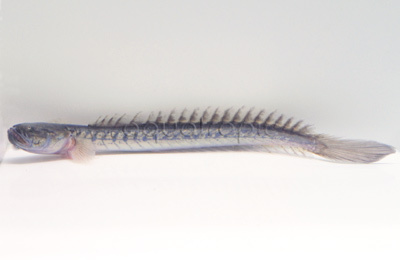
Prehistoric Dragon Goby (Gobioides broussonnetii)
Sporting a face that only a mother could love, Gobioides is unquestionably one of the most unusual fishes to be had in the home aquarium, but, unfortunately, many fail to appreciate the specialized demands this species has in adulthood. This is another coastal fish, occurring across a nearly identical distribution as the Sailfin Molly, but it lives a decidedly different life relative to most fishes. In the wild, it is reported to grab mouthfuls of sediments, digesting whatever organic btis might be present, as well as directly scraping bits of algae and microorganisms from hard substrates. Aquarium specimens do take to eating frozen and dry foods, though it is no doubt wise to focus on a mix of foods designed to replicate this herbivorous diet. Specimens kept long-term in freshwater have a poor track record, with brackish salinities being highly recommended. Reaching lengths in excess of a foot, this is also one of the larger brackish species regularly seen, requiring a large tank to accommodate its bulk. Just be sure to avoid mixing this tranquil creature with the overly inquisitive pufferfishes. Not all brackish fishes are meant to be friends, so always do your homework!